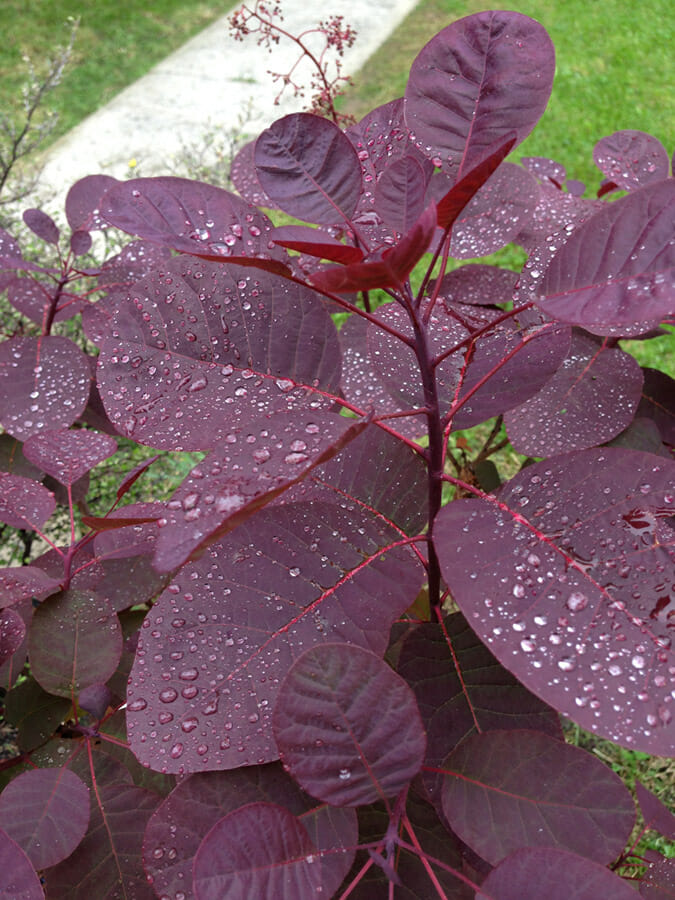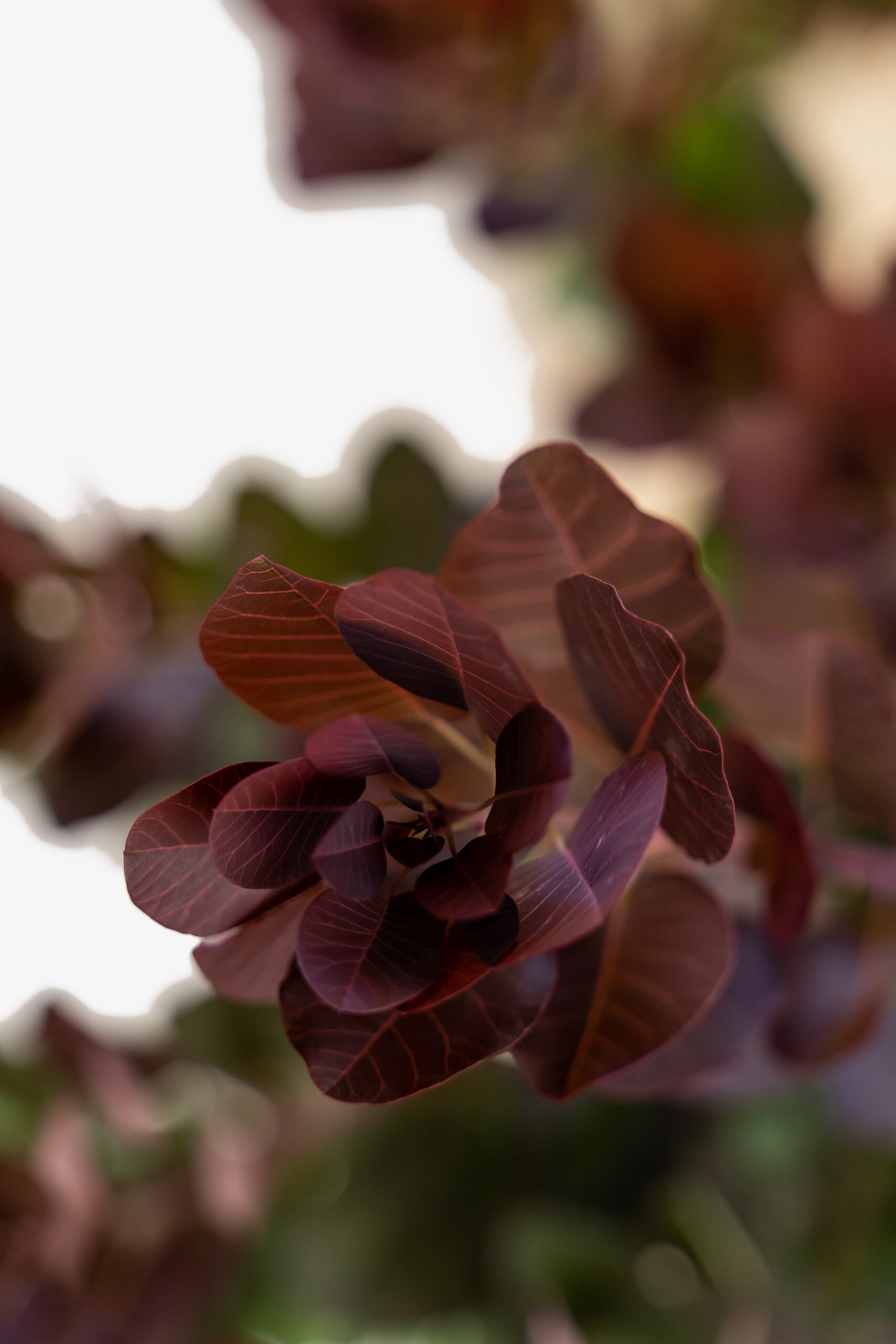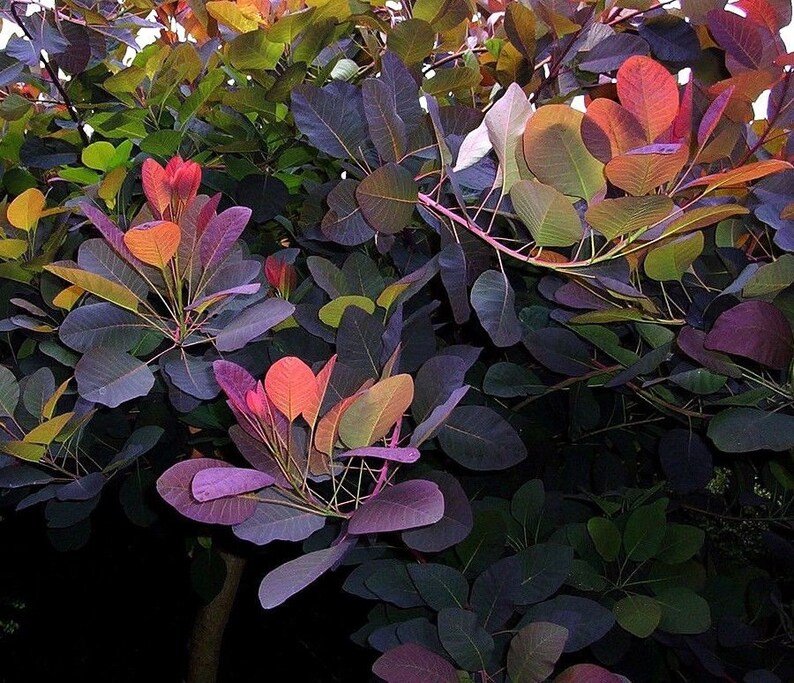
Zone 4 consists of some of the coldest areas in the U.S., such as northern New York and northern Idaho.īy comparison, Zone 9 consists of states such as Florida and Georgia, which experience mildly low temperatures that don’t usually dip below freezing.Ī dwarf smoke bush requires moderate temperatures to grow correctly. The smoke bush tree performs well in USDA plant hardiness zones 4–9. Examples of dwarf smoke bush varieties include the “Winecraft Black,” which has deep purple leaves that become black and then turn into brighter orange and red tones, and the “Young Lady,” which has pink flowers and leaves that turn yellow, red, and orange in autumn. There are many popular varieties of the smoke bush tree. After the tree flowers, during the spring, it produces clusters of filaments that also resemble smoke.ĭuring autumn, the foliage usually becomes dark or takes on autumn colors of red and orange. This tree got its name because of its wispy flowers that look like puffs of smoke. It can usually grow to between 10 and 15 feet in height and width, requiring lots of landscape space. The smoke bush is a deciduous tree that originated in central Europe and China. ISBN 978-0-8493-2678-3.Cotinus coggygria, or smoke tree, is part of the Anacardiaceae family, which contains roughly 870 species of flowering trees, such as pistachio, mango, and poison ivy. CRC World Dictionary of Plant Names: Common Names, Scientific Names, Eponyms, Synonyms, and Etymology. Etymology of Rhus at Quattrocchi, Umberto (2000).

The species is native to a large area from southern Europe, east across central Asia and the Himalayas to northern China. coggygria from the early Pliocene epoch have been found in Western Georgia in the Caucasus region. Most of the flowers in each inflorescence abort, elongating into yellowish-pink to pinkish-purple feathery plumes (when viewed en masse these have a wispy 'smoke-like' appearance, hence the common name "smoke tree") which surround the small ( 2–3 mm or 1⁄ 16– 1⁄ 8 in) drupaceous fruit that develop. The flowers are numerous, produced in large inflorescences 15–30 cm (6–12 in) long each flower 5–10 millimetres ( 1⁄ 4– 3⁄ 8 in) in diameter, with five pale yellow petals. The autumn colour can be strikingly varied, from peach and yellow to scarlet. The leaves are 3–8 centimetres ( 1 + 1⁄ 4– 3 + 1⁄ 4 inches) long rounded ovals, green with a waxy glaucous sheen. It is a multiple-branching deciduous shrub growing to 5–7 metres (16–23 feet) tall with an open, spreading, irregular habit, only rarely forming a small tree.


Rhus cotinus, the European smoketree, Eurasian smoketree, smoke tree, smoke bush, Venetian sumach, or dyer's sumach, is a Eurasian species of flowering plant in the family Anacardiaceae.


 0 kommentar(er)
0 kommentar(er)
